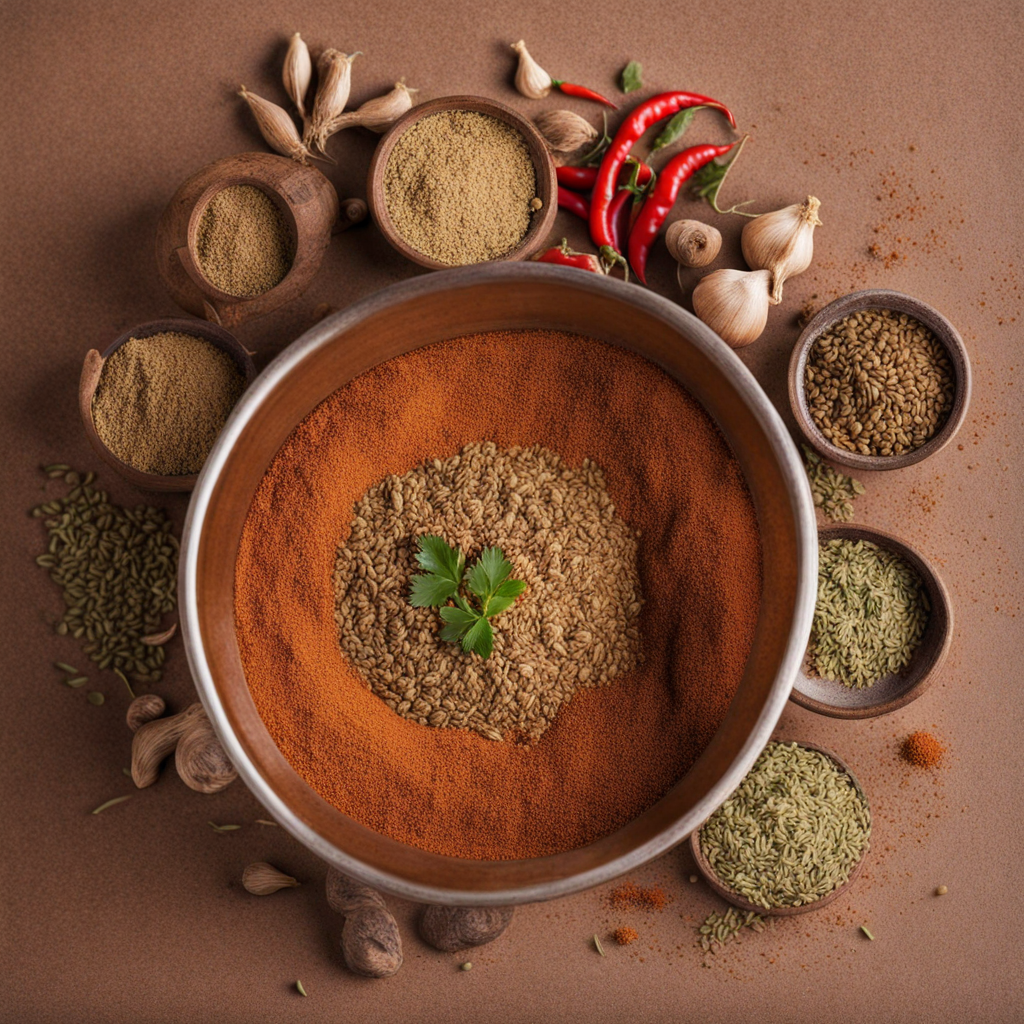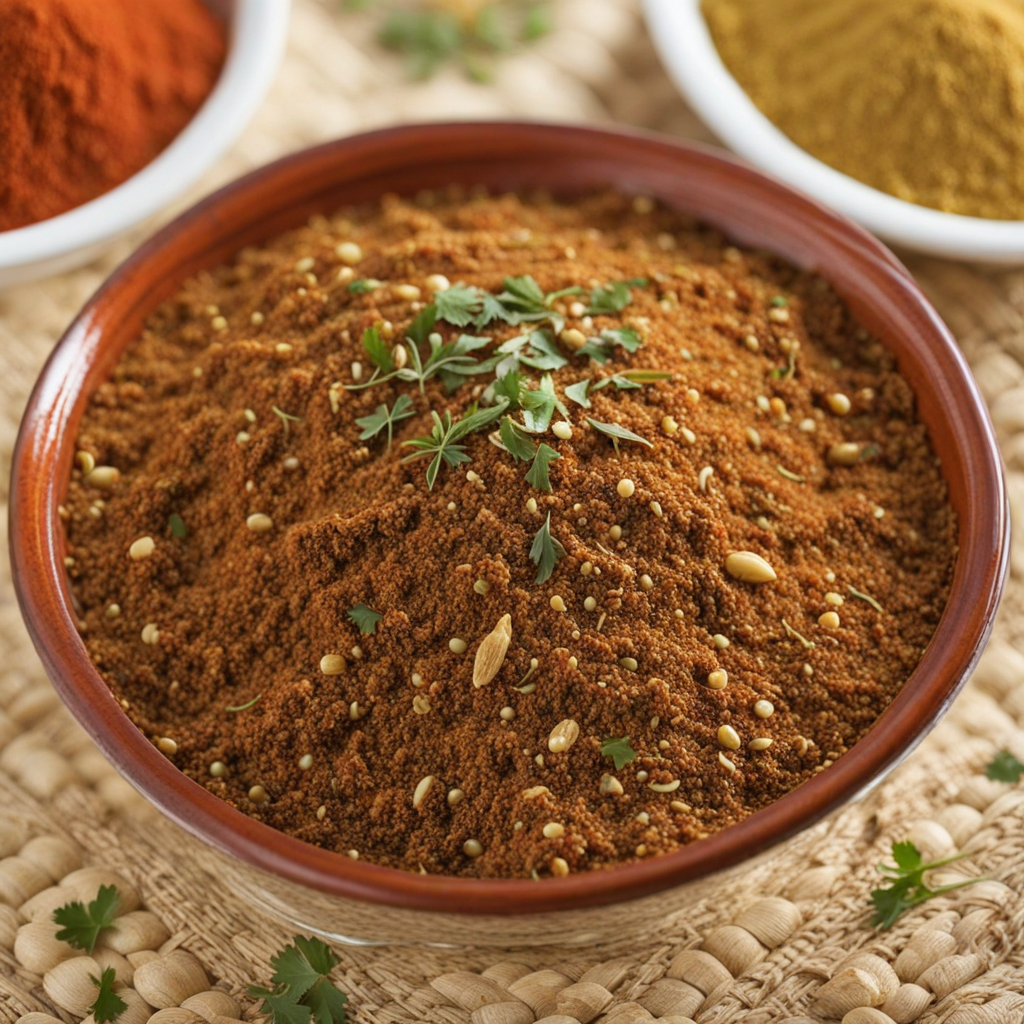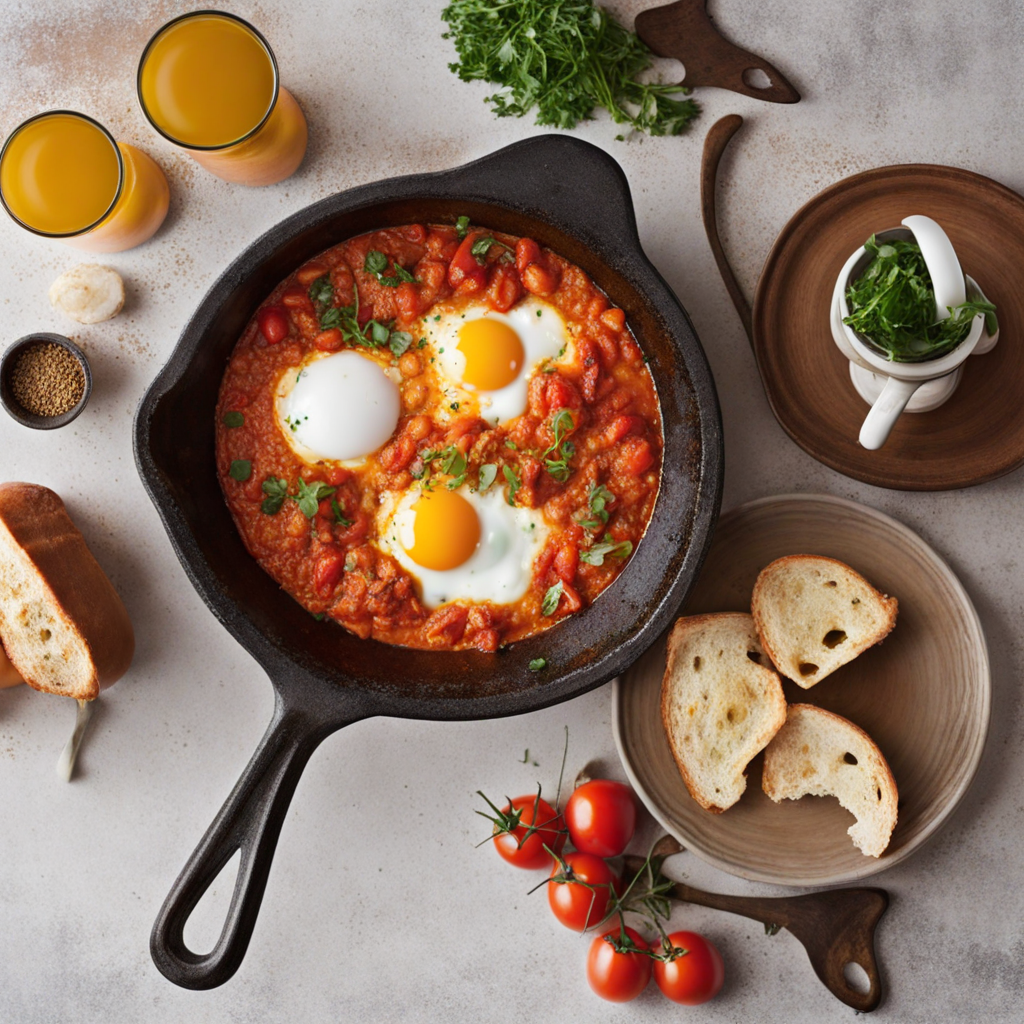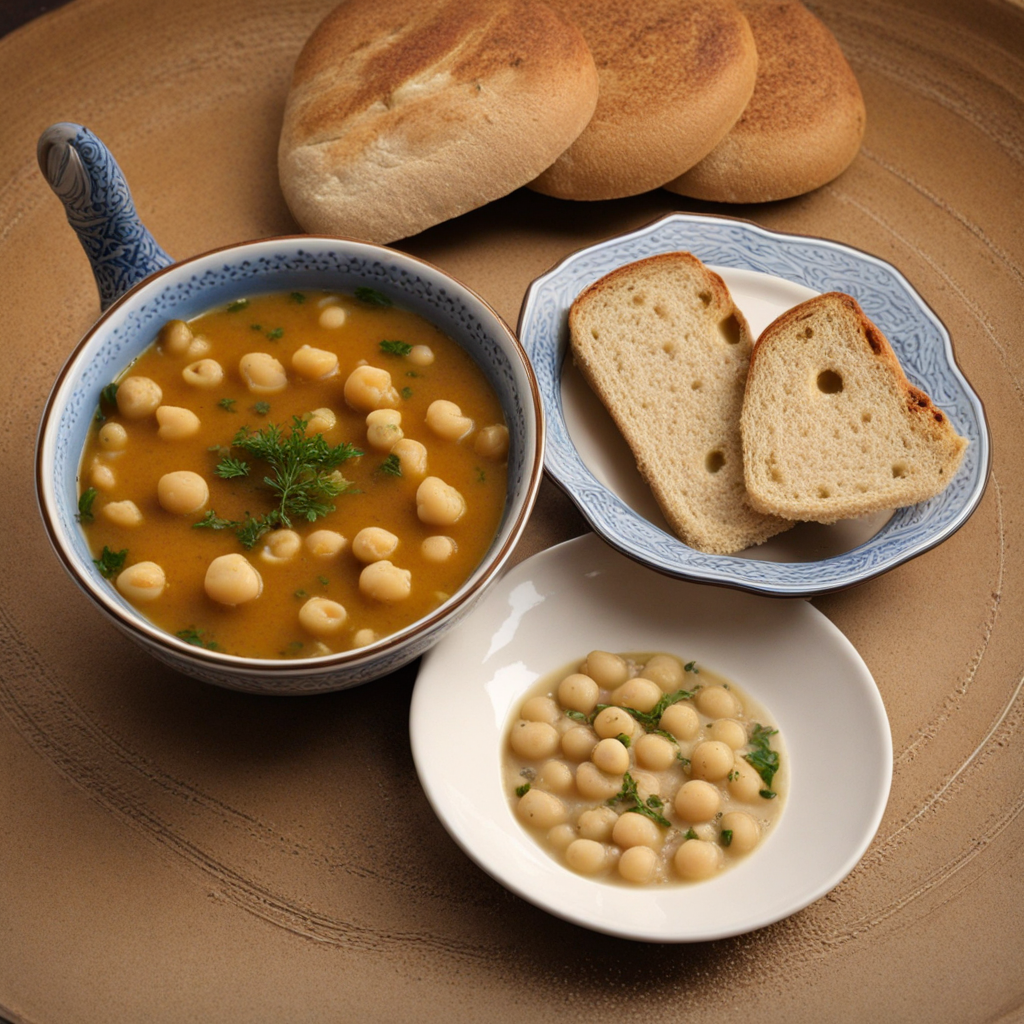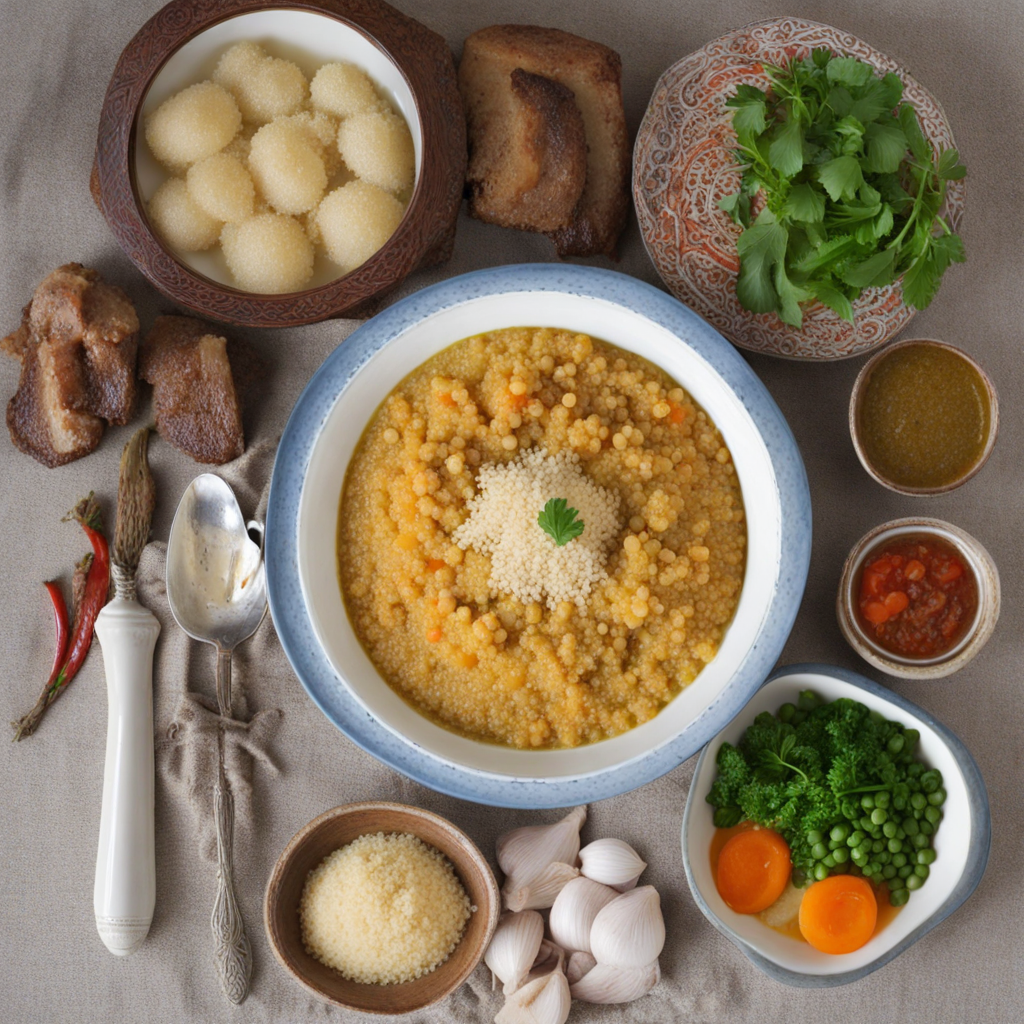Tabil
Tabil is a traditional Tunisian spice blend that tantalizes the taste buds with its aromatic and bold flavors. This distinctive mixture primarily consists of ground coriander, caraway seeds, and garlic, often complemented by chili peppers and salt. The coriander lends a citrusy note, while the caraway introduces a warm, earthy depth, making Tabil a versatile seasoning that enhances a variety of dishes. Its vibrant profile makes it a staple in Tunisian cuisine, particularly in marinades, stews, and grilled meats, transforming ordinary meals into extraordinary culinary experiences. The allure of Tabil lies not just in its flavor but also in its cultural significance. It embodies the rich culinary heritage of Tunisia, where spices have long been revered for their ability to elevate dishes and create memorable dining experiences. Chefs and home cooks alike appreciate Tabil for its ability to impart a unique character to traditional recipes, often using it to season lamb, chicken, or fish, as well as in vegetable dishes and salads. The blend is a testament to the Tunisian love for bold and vibrant tastes, inviting diners to explore the depth of flavor that this spice mix brings. For those eager to discover Tabil, using it is an adventure in itself. A simple sprinkle can transform a basic dish into a flavorful masterpiece, enhancing everything from roasted vegetables to soups and couscous. When marinated with Tabil, meats become incredibly juicy and flavorful, making it a perfect choice for grilling or slow-cooking. Whether you’re a seasoned cook or a novice in the kitchen, incorporating Tabil into your meals will undoubtedly introduce you to the rich and complex world of Tunisian flavors, encouraging you to explore even further into the vibrant tapestry of North African cuisine.
How It Became This Dish
The History of Tabel: A Culinary Gem from Tunisia #### Origins Tabel, also known as "tabel" or "tabil," is a distinctive spice blend that hails from Tunisia, a country rich in culinary traditions and diverse influences. The origins of tabeel can be traced back to the ancient civilizations that flourished in North Africa, particularly during the time of the Carthaginians and later the Romans. The spice blend is emblematic of the Berber culinary traditions, which have been shaped by centuries of cultural exchange through trade, conquest, and migration. The primary ingredients of tabeel include coriander, caraway, and garlic, often complemented by a variety of other spices such as cumin, black pepper, and chili flakes. The selection of these spices reflects the agricultural bounty of the Tunisian landscape, where herbs and spices thrive due to the Mediterranean climate. The blend showcases the region’s historical connections to the spice trade, which brought flavors from across Africa, the Middle East, and beyond. #### Cultural Significance In Tunisia, tabeel is much more than just a seasoning; it represents a cultural identity and a connection to the land. The use of tabeel in cooking is deeply embedded in the social fabric of Tunisian life. It is commonly used in traditional dishes, like couscous, stews, and grilled meats, infusing these meals with a distinct flavor profile that is synonymous with Tunisian cuisine. Tabeel is also a symbol of hospitality in Tunisian culture. When guests are welcomed into a home, they are often treated to dishes seasoned with this blend, illustrating a sense of pride in local culinary practices. The preparation of meals using tabeel is often a communal affair, with families gathering to share recipes and stories, thereby reinforcing familial bonds and cultural heritage. #### Development Over Time As Tunisia has evolved through various historical epochs, so too has the use of tabeel. The Arab conquest of North Africa in the 7th century brought with it new spices and cooking techniques, which gradually merged with existing Berber traditions. This fusion is reflected in the complexity of tabeel, as it adapted to incorporate influences from Arabic, Ottoman, and even Mediterranean cuisines. During the Ottoman period, the culinary landscape of Tunisia underwent significant transformation, and tabeel became a staple in the kitchens of both commoners and the elite. It was during this time that the use of tabeel began to spread beyond the borders of Tunisia, influencing neighboring countries in North Africa and the Mediterranean. Each region adapted the spice blend to its own culinary practices, giving rise to variations that are found in different parts of the Maghreb. In the 19th and early 20th centuries, with the arrival of European colonizers, Tunisian cuisine experienced further evolution. The French occupation introduced new ingredients, such as olive oil and sauces, which began to be blended with traditional spices like tabeel. Despite these changes, tabeel remained a beloved component of Tunisian cooking, serving as a reminder of the country's rich history and resilience in preserving its culinary identity. #### Modern Interpretations In contemporary Tunisia, tabeel continues to play a vital role in both home cooking and the restaurant scene. As global interest in international cuisines has surged, Tunisian food, characterized by the unique flavors of tabeel, has begun to gain recognition on the global stage. Chefs in Tunisia and abroad are experimenting with tabeel, incorporating it into modern dishes while maintaining its traditional roots. The resurgence of interest in authentic and regional cuisines has also led to a revival of traditional recipes that feature tabeel. Culinary enthusiasts are increasingly seeking out this blend, recognizing its potential to elevate dishes not just from Tunisia, but across various culinary landscapes. The integration of tabeel into fusion cuisine is a testament to its versatility, as it complements a wide range of ingredients and cooking styles, from grilled vegetables to seafood. Moreover, the growth of the artisanal food movement has facilitated a renewed appreciation for traditional spice blends like tabeel. Local producers are now creating high-quality, hand-crafted versions of tabeel, often using organic ingredients sourced from Tunisian farms. This artisanal approach not only preserves the authenticity of the spice blend but also supports local economies and encourages sustainable agricultural practices. #### Conclusion Tabel is more than just a spice mix; it is a rich tapestry of history, culture, and culinary art that has evolved over centuries. From its ancient origins in the Berber traditions of North Africa to its modern-day interpretations, tabeel embodies the spirit of Tunisia and its people. As culinary enthusiasts and chefs continue to explore its potential, tabeel remains a vital link to the past, a symbol of national identity, and a flavorful ambassador of Tunisian cuisine on the global stage. In celebrating tabeel, we not only honor the past but also embrace the future of Tunisian cooking, ensuring that this culinary gem continues to inspire generations to come. Whether used in traditional dishes or innovative creations, tabeel stands as a testament to the enduring power of food to connect us to our heritage and to each other.
You may like
Discover local flavors from Tunisia


